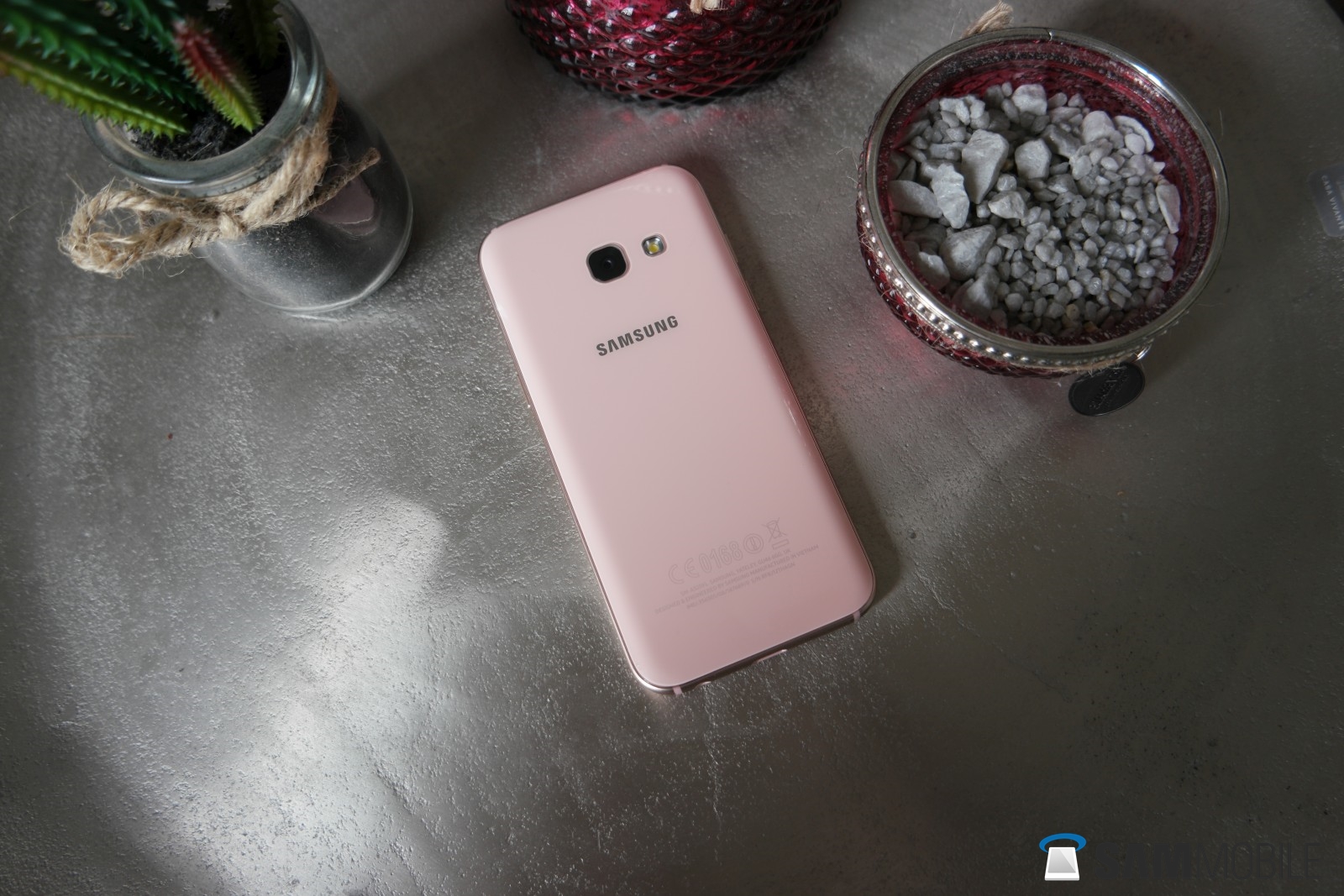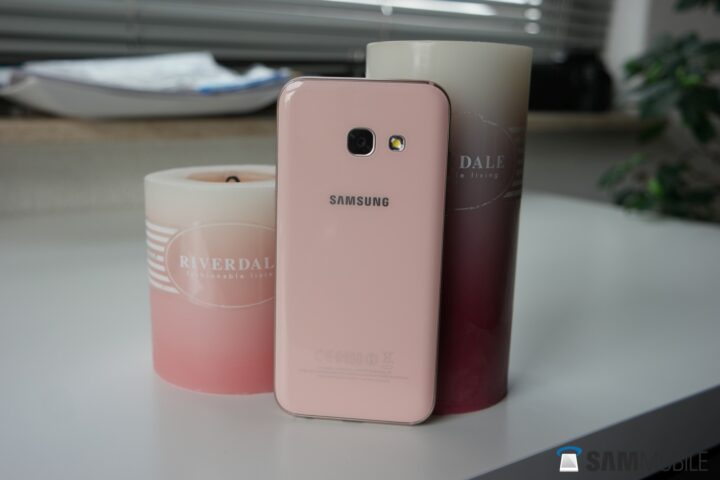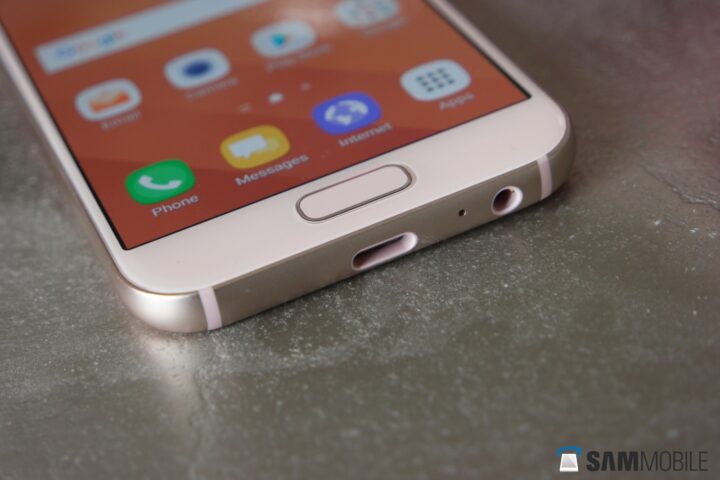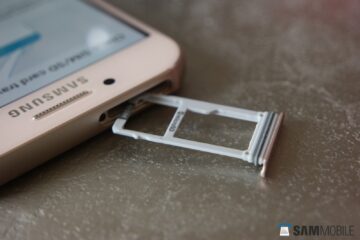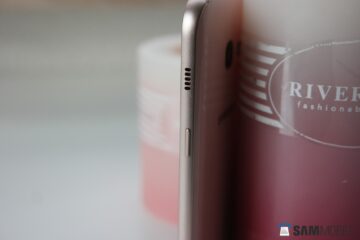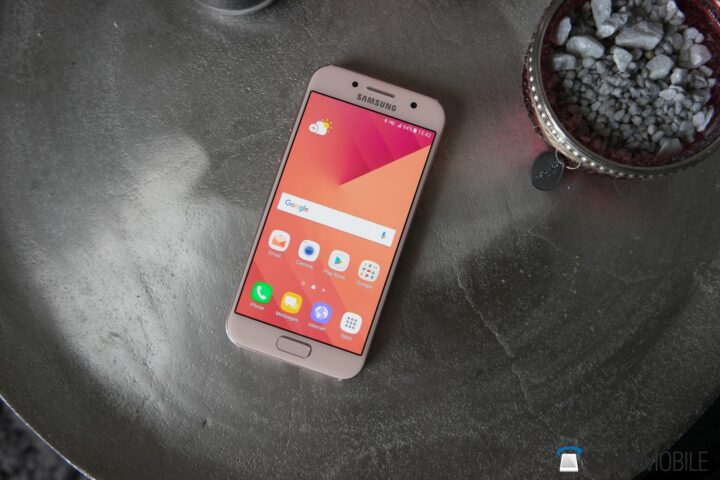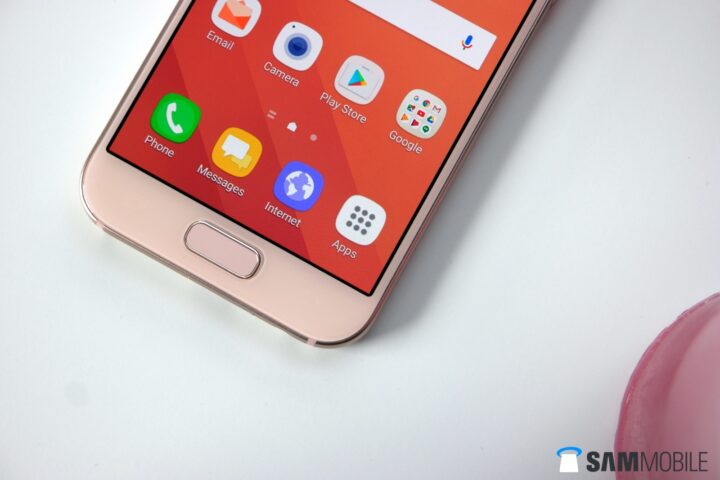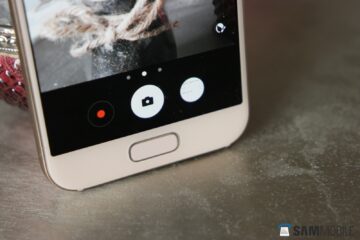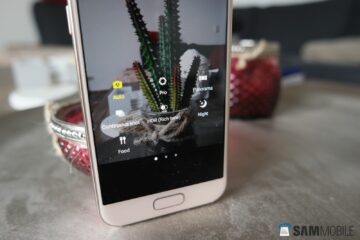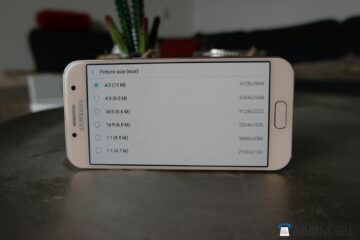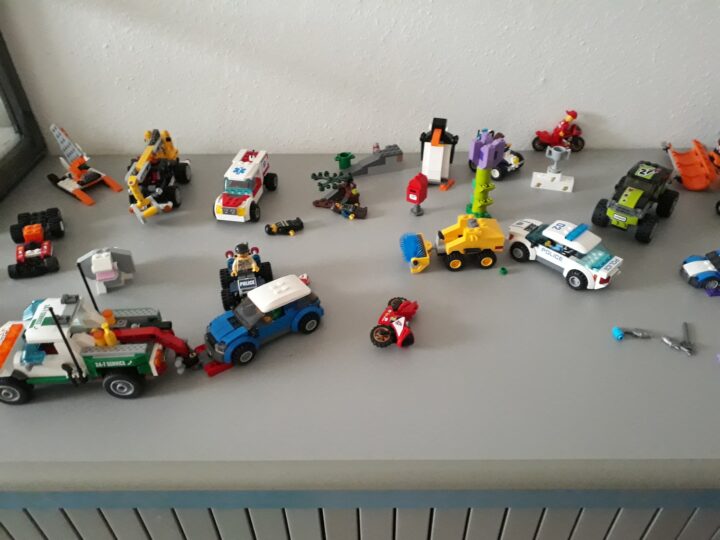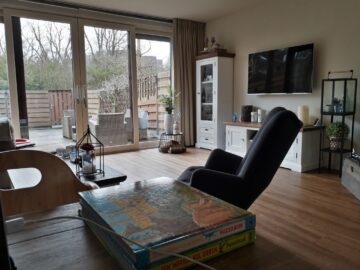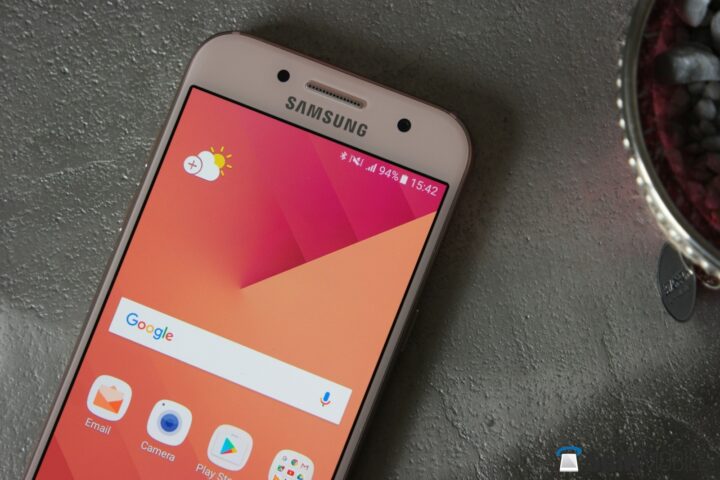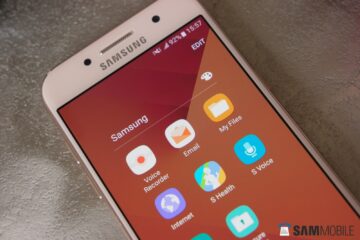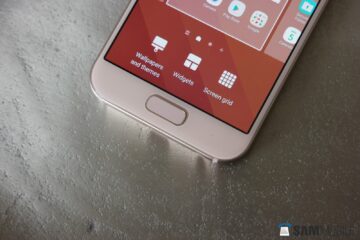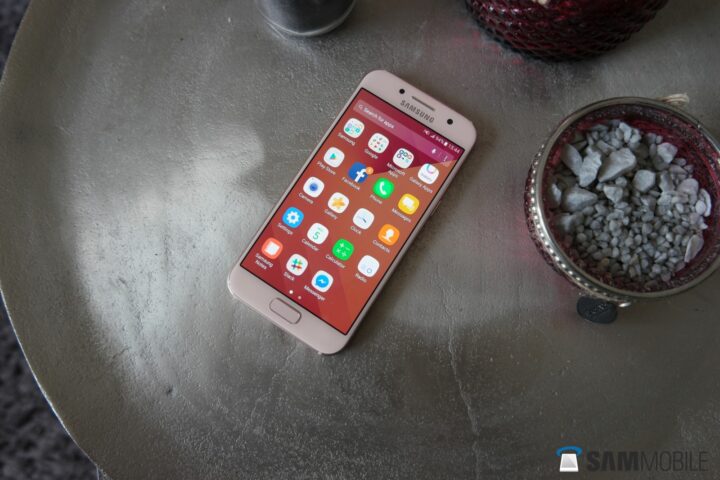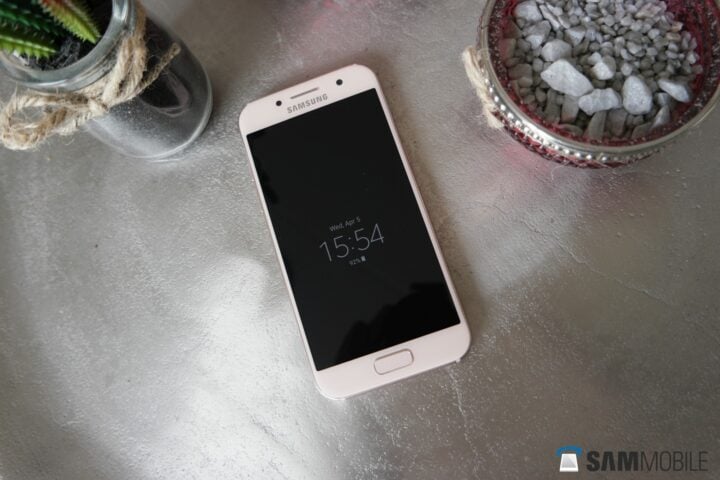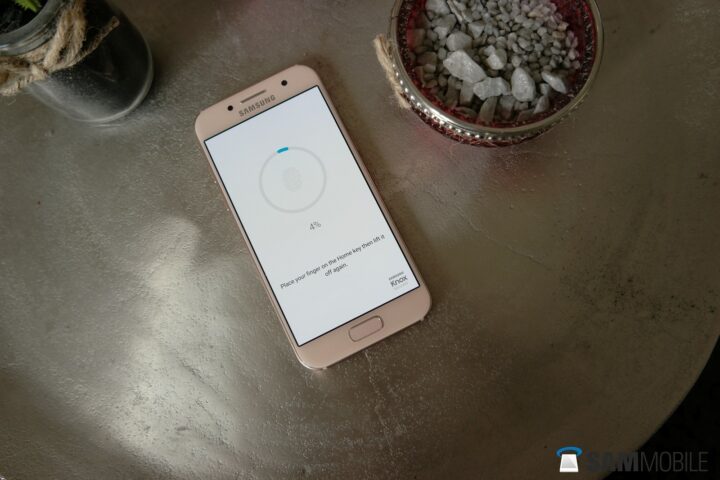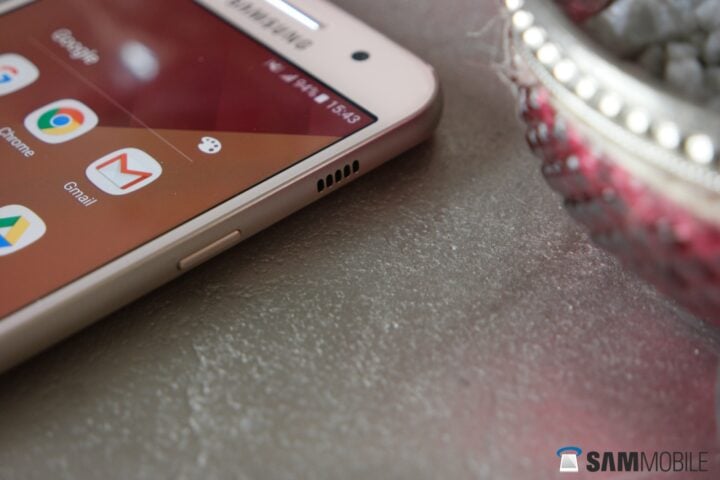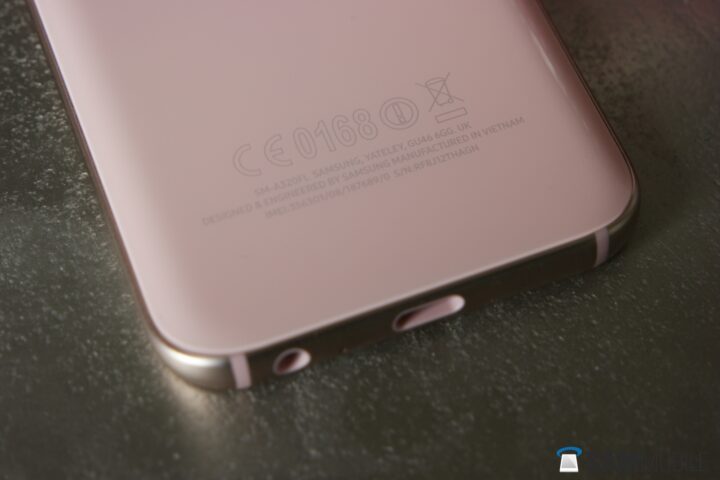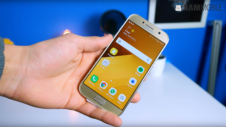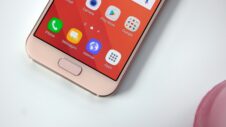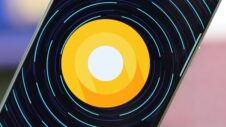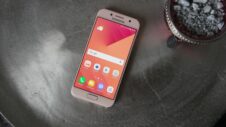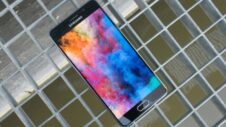After reviewing the Galaxy A5 (2017), I turned to the Galaxy A3 (2017), the smallest of the new A series. The A3 has always been the device lacking in specs ever since the Galaxy A lineup was launched. Last year’s A3 had no Samsung Pay support nor a fingerprint sensor, making it a tough sell compared to its bigger siblings.
Samsung has changed things a bit this year, though. The A3 (2017) is water resistant like the A5 and A7 and has support for Samsung Pay as well. It does, however, miss out on an important feature: The 16-megapixel front camera on the A5 and A7 has been replaced by an 8 MP camera on the A3, which could take it out of the running for selfie lovers.
But what is the overall experience like? Has Samsung outdone itself this year, or is the new A3 once again a hard to recommend device? Let’s dive into the review and find out.
Design
Right off the bat, this phone comes off as a well engineered and beautiful machine. It has the same glass and metal build as the A5 and A7. In the bottom end of the mid-range market, I can say the A3 (2017) is one of the best in terms of design, with very little competition.
Now, let’s go into the details. The Galaxy A3 (2017) has the same thermoformed double-edged back as the A5 and A7, and 2.5D glass at the front. Both of these elements make the phone very comfortable to hold. Despite the glass at the front and back, I never thought the phone would drop out of my hands. Of course, this is mainly because of the compact size (the phone has a 4.7-inch display). For many, the size will come off as perfect.
The unit we reviewed is the pink version; it’s a pastel kind of pink that Samsung calls Peach Cloud, one that I think will do very well with the ladies. The front of the device looks excellent with the slab of Gorilla Glass 4 surrounded by the pink frame.
The A3 (2017) comes with the same button placement as any other phone we have seen from Samsung. The home button on the front features a fingerprint sensor; the big change here is the placement of the speaker, which is now above the power button on the right of the device. The left side has the volume rockers and SIM tray, while the top has a microSD slot and the secondary mic. The bottom of the phone holds the USB Type-C port, the 3.5 mm audio jack and the primary microphone.
The new A3 has IP68 certification for water and dust resistance, the same as the A5 and A7. In its price range, the A3 comes off as unique thanks to the added protection against water and dust, something you will not find on any of the competing smartphones.
Display
The Galaxy A3 (2017) has a 4.7-inch Super AMOLED HD (1280×720) display with a pixel density of approximately 312 ppi. The display has a Diamond PenTile pixel arrangement, but with the small screen, the resolution turns out to be sharp. Viewing angles are how you expect them to be, which is to say they are never a problem. The same goes for sunlight legibility. At a maximum of 547 nits, the screen isn't as bright as the A5 or A7's, yet it does a good job of keeping things readable out in the sun.
The screen also goes very dim to a minimum of 1.8 nits, which means there isn't a lot of eyestrain when you're using the phone in bed at night. As for the colors, they pop as much as we would expect them to on an AMOLED display, and contrast is infinite so you also get very deep blacks. The only fly in the ointment here is that the display is once again on the cooler side of the spectrum, making it look rather blue. You can fix this by changing the display mode to basic, although that also takes away some of the vividness of the display.
Camera
The camera is one of the few things on this phone that could do with a lot of improvement. The rear camera is a 13-megapixel unit with f/1.9 aperture and no optical image stabilization. The UI is the same as that on the A5 and A7; you can start the camera up with a double-press of the home button (a feature that you can disable if you wish, from the camera settings), and use the app with gestures. Swiping up and down switches between the front and rear cameras, swiping to the right brings up modes, and swiping to the left gives you filter options.
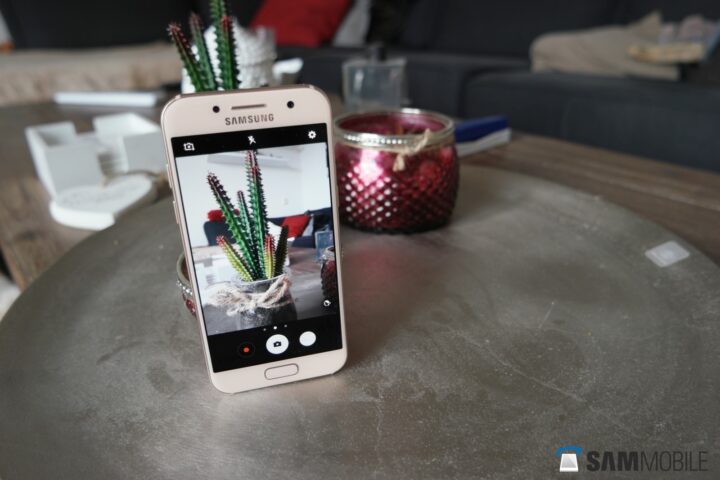
Like with other A series devices (and pretty much any non-flagship Samsung phone), the camera can crank out decent detail in the daytime, but image quality becomes a mess when there isn't enough light. In natural light the photos have good dynamic range, even though the colors miss out slightly on accuracy. Also, zooming in 100 percent on an image reveals that the lines become a bit blurry, but the detail in good lighting is commendable when the images are viewed normally.
Video recording isn't very different. There is ample detail, low noise, and good color accuracy in good lighting, but not so much in low light conditions. The camera can shoot 1080p videos at 30fps, and the lack of OIS means you have to keep your hands steady to take shake-free videos.
Here are a few samples from the rear camera, including a couple of 100 percent crops.
Selfie Camera
Let's talk about the selfie camera. Now, while the lower resolution compared to the A5 and A7 might put a few people off, the actual performance of the 8-megapixel front camera is not as bad as you think it would be. It has the habit of blurring out the image, but it does otherwise take decent pictures. The images aren't very sharp, but there is plenty of detail with good color accuracy and not a lot of noise. In fact, the detail captured by the A3's front camera is pretty much the same as the 16 MP front cameras on the A5 and A7, so we can give it high marks for the overall performance.
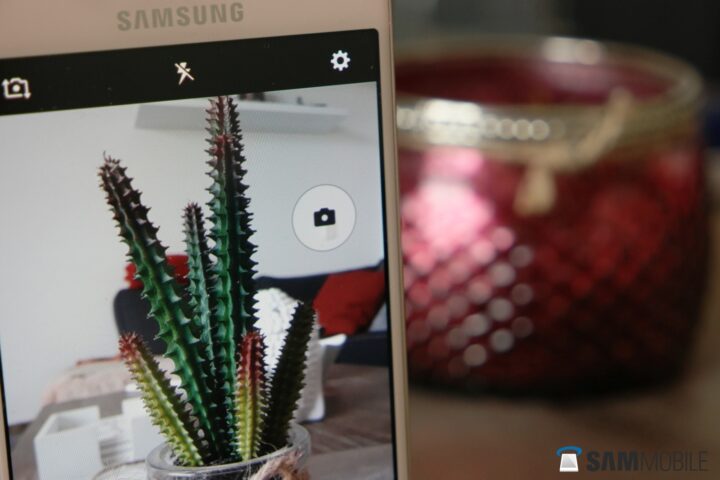
By the way, that new floating camera button on the Galaxy A series? That works great and is very useful, as it removes the need to reach for the actual shutter button. Yes, volume keys are a good alternative to take photos, but those can sometimes be hard to reach depending on how you're taking selfies, so the floating button is a handy feature.
Software
The Galaxy A3 (2017) runs Android 6.0.1 Marshmallow out of the box, with the new user interface that debuted with the Galaxy Note 7. There are quite a few features here that we haven't seen on previous Samsung devices, and even though it isn't Nougat, some features that were introduced on the S7 and S7 edge with Nougat are available here. As I said in the A5 review, it's a shame that there is no Nougat out of the box, but Samsung will hopefully release the update in the near future.
There are a few things that are new or different here compared to what everyone is used to on Samsung devices, so let's take a look at everything point by point.
Homescreen
With the Flipboard briefing panel on the left of the homescreen and support for third-party themes and icons, the A3 (2017) is a complete package. It even has a 3D Touch-like function, which allows you to long press on an icon on the home screen and disable that app or view the app's info.
The most used toggles are revealed by a swipe down from the notification shade, and another swipe of the notifications menu reveals the entire list of toggles. As always, you can rearrange the toggles to your liking. One issue here is that the brightness slider is now hidden in the extended toggles screen, with no option to access it when you're viewing your notifications. Nougat should fix this, as the S7 and S7 edge allow re-positioning of the brightness slider.
Another feature shared with Nougat is grouping of notifications. For example, if you have multiple unread emails in the Gmail app, the notification shade will show you a single grouped notification by default. Press the arrow on the right side or the notification itself, and all the notifications will expand, allowing you to further expand or collapse every email. Sadly, that tap on the grouped notification is necessary for expanding it – the grouped notification cannot be expanded without a swipe, which is a shame.
Apps screen
The app drawer is the same as before, with the added ability to search through apps. If an app isn't found, the phone will offer the option for searching for it in the Play Store or the Galaxy Apps store. Apps aren't sorted alphabetically by default, but you can change that from the app drawer menu. Once set to alphabetical order, apps will always be sorted that way.
Blue light filter
This is a feature that arrived on the Galaxy S7 with Nougat, and it is available on the A3 (2017) as well. Blue light filter reduces the amount of blue light that emanates from the display; blue light is what keeps the brain active (that is why people wake up when the sun, a big source of blue light, rises in the morning) and therefore makes it difficult to fall asleep at night. Blue light is also generally harsher on the eyes than red or green, so the blue light filter is a very important feature that no longer needs a third-party app. The filter can be set to turn on and off at specified times, and its intensity can also be adjusted as needed.
Always On Display (AOD)
Always On Display is arriving on the Galaxy A lineup with the 2017 models. There are three main views you can choose from: clock, calendar, and image, with some customization available. AOD also has support for third-party apps from the get-go, and double-pressing a notification will launch the app or expand its notifications (the latter happens in the case of third-party apps, while system apps can be directly launched with a double-press).
Luckily, AOD doesn't consume much battery (1 percent in one and a half to two hours). This is mainly because it shuts off when the phone is in your pocket, and also because the phone has a sufficient battery capacity for its specs (to compare, the Galaxy S7, with more demanding specs, has the same battery capacity). The AOD screen is also dimmed based on the surrounding light. Always On Display can be set to turn on and off at specified times, just like the blue light filter feature.
Fingerprint sensor
Just like last year, you can secure your phone with a fingerprint. It is the same fingerprint sensor that is present on the Galaxy S7, meaning it is just as fast. It also lets you sign-in to websites using your fingerprint, although this only works in Samsung's own browser app and some of the inbuilt apps. Purchases made in the Galaxy Apps store can also be authorised using your fingerprint; this is done through your Samsung account.
Oh, and like on the Galaxy J7 Prime, the fingerprint sensor on the new A series only needs to be touched to unlock the phone when the screen is completely off instead of pressing the home button. This is something Samsung is unwilling to offer on its flagship line for some reason, but we are glad to see it is making its way to all of the company's new mid-range and budget phones.
Secure Folder
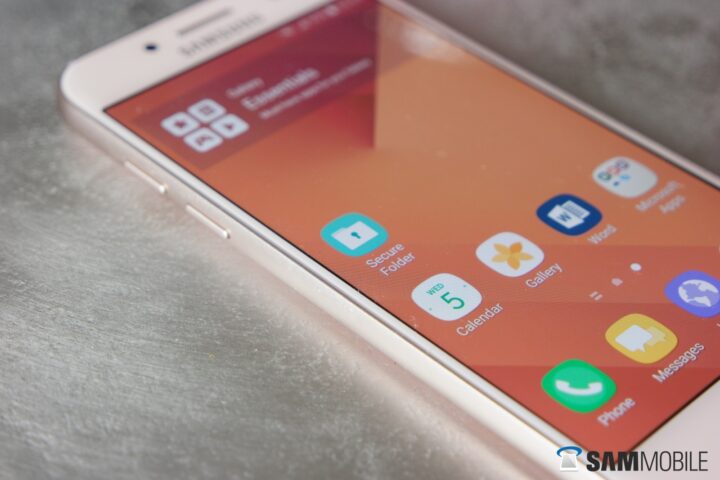
Secure Folder is powered by Samsung's own KNOX security platform. It lets you create a separate space on your phone for your important/private photos, apps and documents. When you take a picture in Secure Folder, or make a document, it can only be accessed inside Secure Folder and will not be visible when you're using your phone normally, keeping things away from prying eyes. Secure Folder was introduced on the Galaxy Note 7, and is set to arrive on the Galaxy S7 soon.
Performance
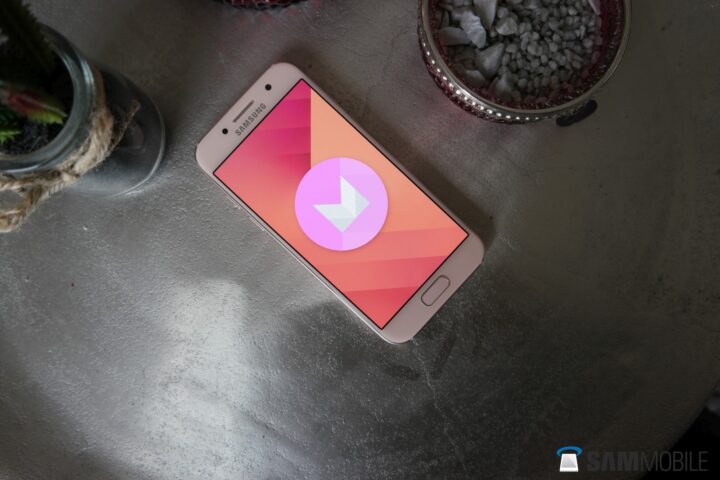
The Galaxy A3 (2017) is powered by the Exynos 7870 chipset, built on a 14 nm process and featuring a clock speed of 1.6 GHz, making it focused purely on efficiency rather than performance. There's 2GB of RAM and a Mali-T380 MP2 GPU accompanying the processor, and for most intents and purposes, the A3 does a fine job at keeping up with regular usage. It's only when playing high-end games or installing/updating apps that the A3 shows its lack of power. The A5 and A7 aren't much better off either in demanding use cases, and I hope the next iterations will be powered by more capable SoCs.
Audio Quality
The Galaxy A3 (2017) has the same loudspeaker placement as its siblings. It's located on the right side of the phone, above the power button, but while we found the speaker's position to be a problem on the A5 and A7, it wasn't an issue on the A3. Since the A3 has a more compact size, it's easier to cup your hand around the speaker to get better sound that is directed towards you rather than away from you. The speaker is very loud, but the sound it produces is a little tinny to my taste (it's like the treble has been dialed all the way up).
The earphones that come with the phone aren't too great, with once again a noticeable lack of focus on the low frequencies (bass). For music, the phone comes with the Google Play Music app, although you can download Samsung's own music player off the Play Store or the Galaxy Apps store. There's Samsung's SoundAlive feature for adjusting the music tones to your liking no matter what music app you use, and there's also an FM radio available. As usual, headphones need to be connected for the radio to work. As for call quality, there'e nothing to complain about. The voice from the other side comes across great, and I was told my voice was clear at the other end as well.
Battery Life
That 2,350 mAh battery inside the A3 might seem tiny, but don't let that fool you. The Galaxy A3 (2017) has excellent battery life and consistently manages to last until the second day, no doubt because of the efficient processor and 720p display. Endurance is naturally less when you use the phone too much on an LTE connection, but it still manages to get to the end of a work day with relative ease, even with Always On Display turned on (AOD gets turned off when the phone is in your pocket, so that helps). There's no fast charging support here, a feature I wish had made the cut, but the small battery doesn't take a long time to charge even with standard charging.
Wrap Up
The Galaxy A3 is a complete package for the Euro 329 asking price, more so than its predecessors could hope to be. The newest A3 has almost all major features of the A5 and A7 – a fingerprint sensor, Samsung Pay support, Always On Display, and IP68 water resistance. It's admirable on Samsung's part to offer as much as it could on this phone, which makes it well poised to take on the competition.
You could go as far as calling the Galaxy A3 (2017) a Galaxy S7 mini. Yes, it has its shortcomings. The camera could be better and not blur photos as often as it does, and overall performance could also do with enhancement as the Exynos 7870 isn't a very powerful chipset. But the A3 (2017) is still the best Samsung's smallest Galaxy A handset has ever been, and it offers excellent value for the price.
| Pros | Cons |
| Compact, flagship-like design | Average rear camera |
| Flagship-grade software features | Performance could be better |
| Fingerprint sensor | No Android Nougat out of the box |
| IP68 water resistance | |
| Samsung Pay support | |
| Good selfie camera | |
| Impressive battery life |
